Pre-weekend reading: How to nurture a personal library. Just lovely.
📚From The Complacent Class by Tyler Cowen, February 2017.

📚 The last paragraph of the last chapter of Fooled by Randomness, and I can’t read it without thinking about Norm Macdonald.

📚 On regression to the mean in Fooled by Randomness. Beware the uncontrolled phase 2 data, especially ones with surprisingly large effect sizes.

📚 Halfway through Fooled by Randomness, the seeds of Antifragile. It’s all one work, all that’s missing is cross-references from earlier to latter written parts.
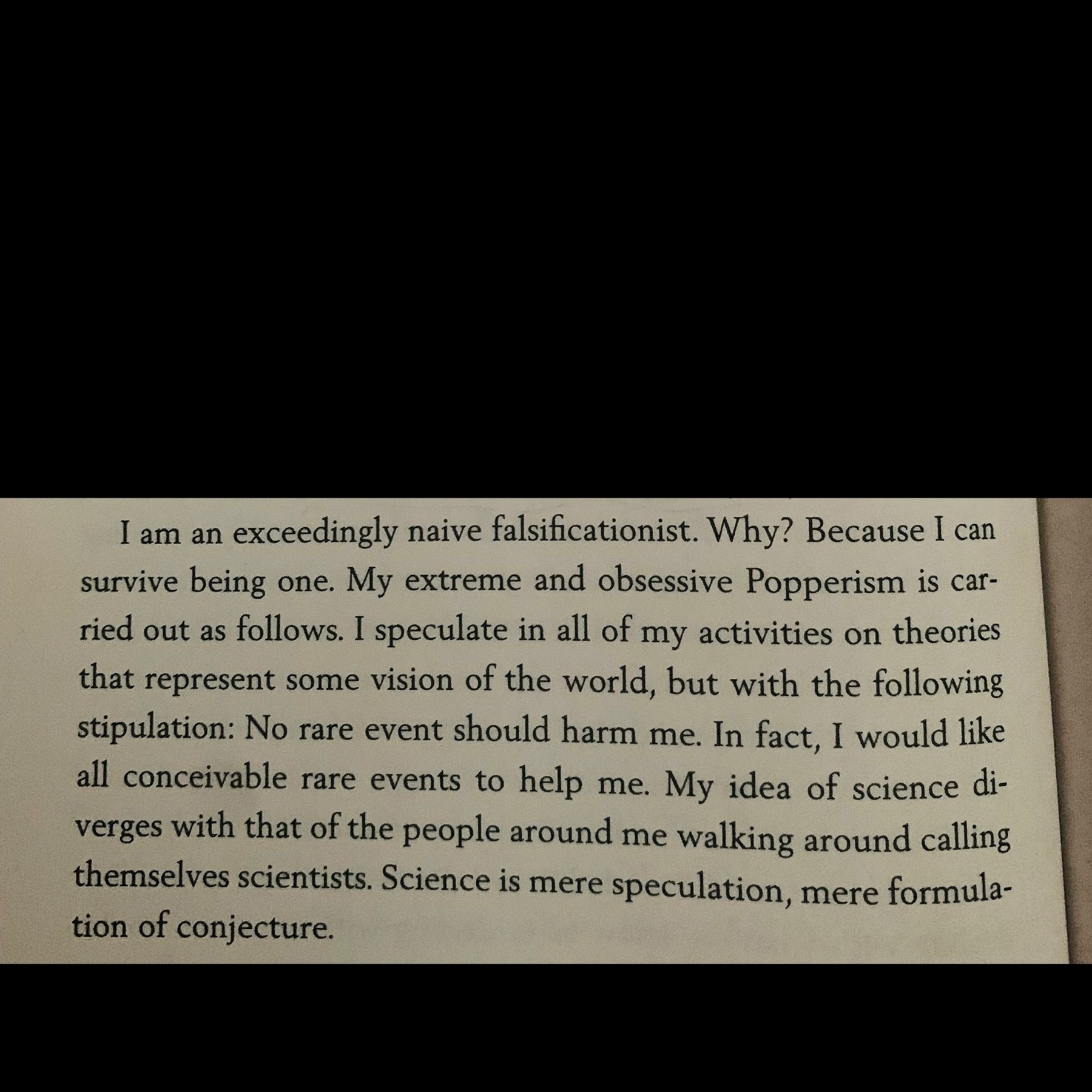
📚 Catching up with John, the busted high-yield trader in Fooled by Randomness.
If you are talking about a 10 sigma event you should have thought in alphas, not sigmas. There may be early hints that the data is not Gaussian but people call them outliers and brush them away.
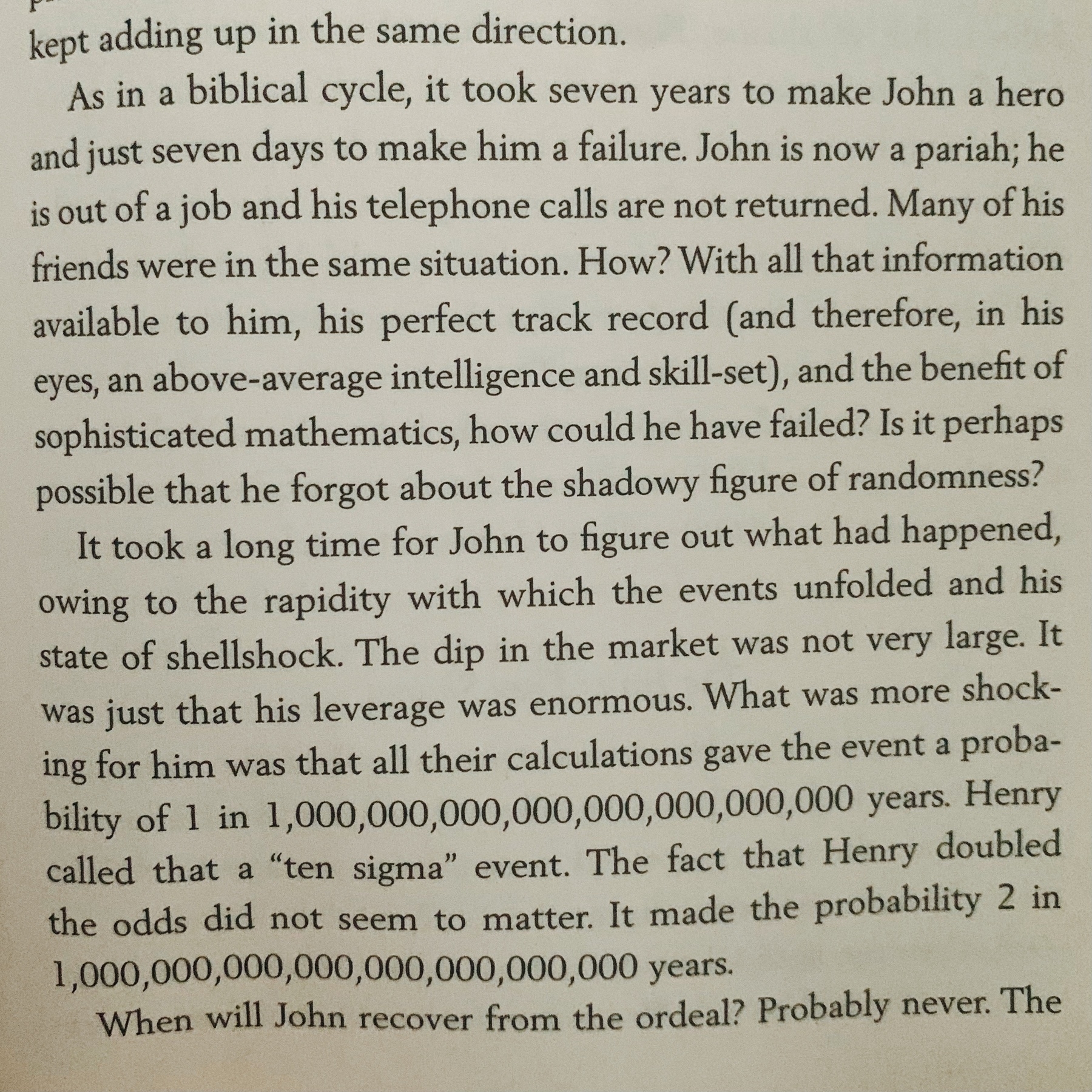
📚 Fooled by hindsight bias. This one is for anyone who thinks lockdowns and school closures in the spring of 2020 were a mistake.
Making ex post “predictions” is infinitely easier than ex ante, and gives you a false sense of confidence to boot. Dangerous and stupid.
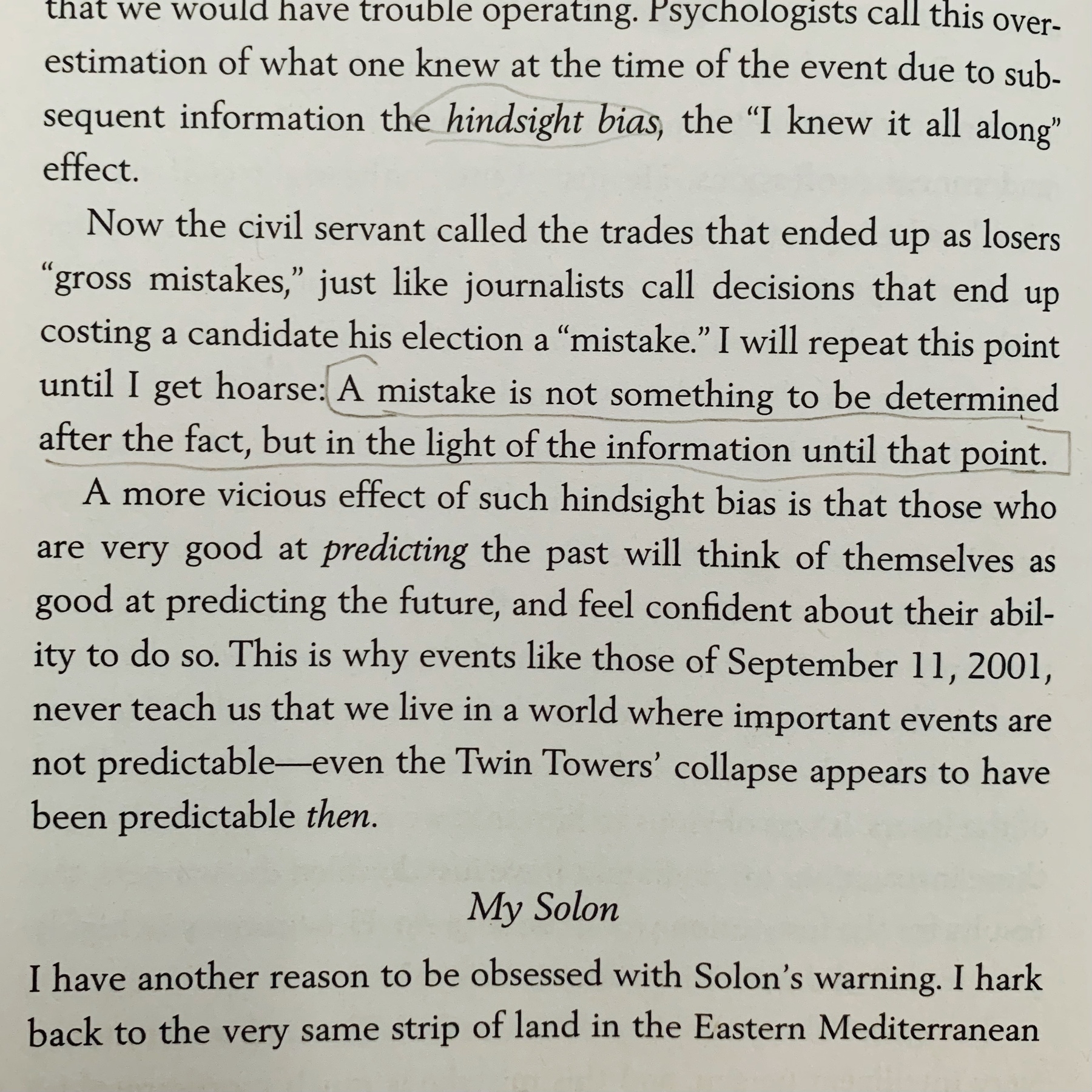
📚 Taleb the prophet, writing about cryptobros and the summer of 2022 back in the early 2000s.
Financial instruments come and go but human stupidity and greed are forever.
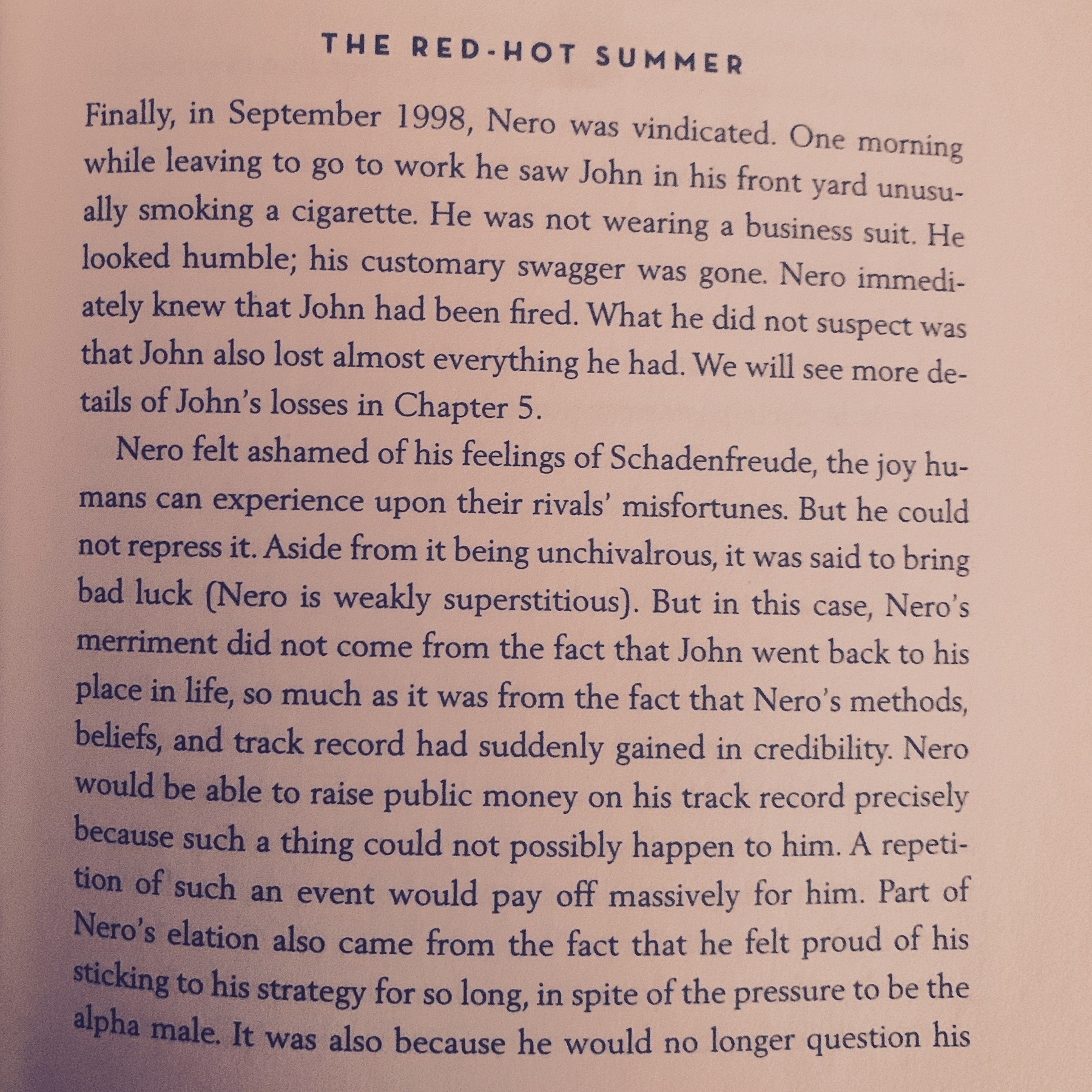
📚 Re-reading Taleb’s Fooled by Randomness for the first time since covid hit. From the preface, on intellectual immodesty. There is a direct line from this to the catastrophic early response to the pandemic.
BTW, our company is called Cartesian but we are Montaignes at heart.
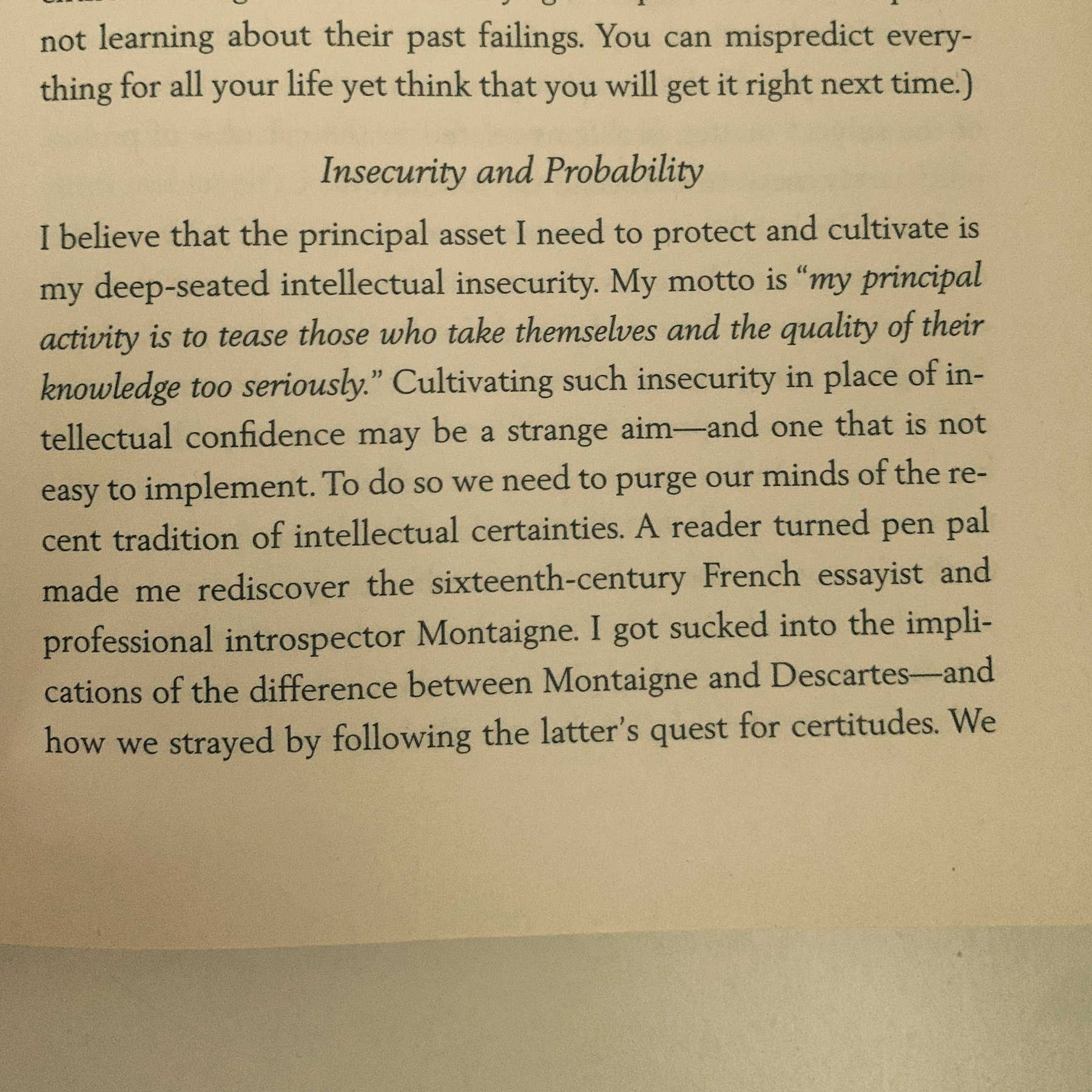
📚 Calculated Risks was funnier than you’d expect from a book about statistical (in)numeracy. It’s healthy to laugh in the face of our inadequacies.